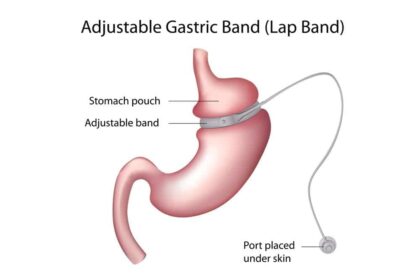Emergency departments (EDs) are among the busiest units in any hospital. They operate in a high-pressure, fast-paced environment where every minute can make a difference in patient outcomes. Long wait times, overcrowding, and administrative bottlenecks not only affect patient satisfaction but also impact the quality and safety of care. In this setting, ER scribes have emerged as critical team members, helping physicians document efficiently, streamline workflows, and ultimately speed up patient throughput.
The Challenge of Patient Flow in the Emergency Room
Patient throughput is a key measure of efficiency in the ED. It refers to the rate at which patients move through the department—from initial triage to discharge or admission. Hospitals face increasing pressure to optimize throughput as ED visits continue to rise year over year. According to the CDC, there were over 145 million emergency department visits in the U.S. in recent years, putting tremendous strain on resources and staff.
Several factors can slow patient throughput. One of the main culprits is documentation. Physicians often spend 30–40% of their shifts entering data into electronic health records (EHRs), navigating multiple screens, and ensuring compliance with regulatory standards. While EHRs improve data accessibility, they can also create delays, diverting physicians’ attention from direct patient care.
Other factors affecting throughput include delays in test ordering and result review, inefficient patient handoffs, and administrative bottlenecks. These inefficiencies can result in longer wait times, patient dissatisfaction, increased stress on staff, and even higher rates of medical errors.
How ER Scribes Improve Efficiency
ER scribes are trained professionals who accompany physicians during patient encounters and document the visit in real-time. They capture patient histories, record vital signs, enter orders, and maintain accurate charts, allowing physicians to focus on clinical care rather than administrative tasks.
By handling these time-consuming responsibilities, ER scribes enable physicians to see more patients in the same amount of time. This directly translates into faster throughput, reduced bottlenecks, and improved departmental efficiency. Physicians no longer need to catch up on charting after their shifts or during downtime, which often disrupts workflow and extends patient wait times.
Real-time documentation also allows for quicker decision-making. Test results, lab orders, and imaging requests are entered immediately, and scribes can flag abnormal findings, helping physicians respond faster. In addition, scribes anticipate the physician’s workflow needs, such as pulling up prior medical records or preparing discharge instructions, which keeps the patient encounter smooth and efficient.
Enhancing Accuracy and Compliance
Efficiency is valuable only when combined with accuracy. ER scribes play a pivotal role in hospital in improving documentation precision. In the hectic environment of an emergency department, even minor errors in patient records can lead to delays, miscommunication, or potential legal issues.
With scribes documenting in real-time, patient charts are more complete, reducing the risk of omissions or mistakes. This not only supports clinical care but also ensures compliance with hospital policies, regulatory standards, and insurance coding requirements. Hospitals that employ scribes often report a reduction in documentation errors by 15–20%, which directly impacts revenue cycles and patient safety.
By maintaining detailed, accurate charts, ER scribes also help physicians avoid duplication of tests or procedures, streamlining care and further enhancing throughput. Accurate documentation ensures that other team members, such as nurses and specialists, have the correct information when needed, improving communication and coordination in the ED.
Impact on Patient Satisfaction
Patients notice efficiency. When physicians can spend more time talking to them rather than typing into a computer, they feel more heard, respected, and involved in their care. ER scribes indirectly improve patient satisfaction by enabling physicians to provide more personalized attention while still maintaining speed and accuracy.
Shorter wait times and smoother transitions—from triage to treatment to discharge—enhance the patient experience. Quick documentation also accelerates processes like insurance verification, prescription writing, and follow-up scheduling. Hospitals that integrate ER scribes often see measurable improvements in patient satisfaction scores, which are increasingly important in reimbursement models and public reporting.
Supporting the Entire Department
The benefits of ER scribes extend beyond individual physicians to the emergency department as a whole. By keeping patient charts accurate and up to date, scribes reduce administrative bottlenecks that can slow the entire workflow.
For example, discharge instructions, medication lists, and follow-up appointments can be prepared while the physician is still with the patient, reducing the time patients spend in the ED. This not only increases throughput but also frees up resources to handle incoming patients more effectively.
Hospitals leveraging professional ER medical scribing services often report improved throughput metrics across all providers. These services provide trained, HIPAA-compliant scribes who integrate seamlessly into the ED workflow, whether onsite or virtually. The result is a faster, safer, and more organized emergency care environment that benefits staff, patients, and hospital operations alike.
The Bottom Line
Emergency departments operate under intense pressure, where delays can have serious consequences. ER scribes address one of the most significant barriers to efficiency: documentation. By reducing administrative burdens, improving accuracy, and supporting workflow, scribes empower physicians to focus on what truly matters—patient care.
Faster throughput improves not only operational efficiency but also patient satisfaction and clinical outcomes. Hospitals that invest in ER scribes, whether in-house or through professional ER medical scribing services, gain a measurable advantage in today’s fast-paced healthcare landscape. In 2025 and beyond, integrating skilled scribes into emergency departments is no longer optional—it’s a strategic necessity for quality care and efficiency.





